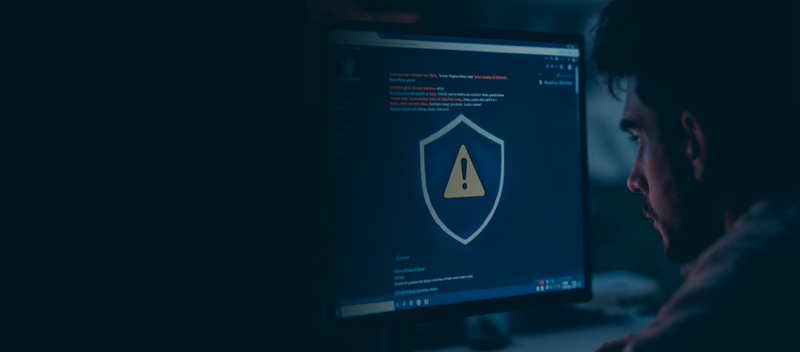Blog Cybersecurity in Education: The Guardian of Student Data
Cybersecurity in Education: The Guardian of Student Data

Data has become one of the most valuable assets in the digital age, which is especially true in the education sector. This is where student data, from personal information to academic records, is stored and managed. However, with the increasing reliance on technology in educational institutions, this data is becoming more vulnerable to cyber threats.
However, implementing effective cybersecurity measures in educational institutions takes a lot of work. It requires a comprehensive approach that includes using advanced security tools, regular training of staff and students about online threats, and the development of solid policies and procedures for data management.
In the following sections, we will delve deeper into the importance of cybersecurity in education, the risks it mitigates, and how it can be effectively implemented to protect student data.
Understanding Cybersecurity Risks in Education
Data breaches are among the most common cybersecurity threats faced by educational institutions. These occur when a cyber attacker gains unauthorized access to internal files and databases, compromising sensitive or personal information. Schools hold a wealth of personal data on students, staff, and parents, making them attractive targets for cybercriminals.
Ransomware Attacks
Ransomware attacks are another significant cybersecurity risk. In such attacks, malicious software encrypts a school’s data, rendering it inaccessible until a ransom is paid. This can disrupt learning, particularly in a remote learning environment where digital platforms are essential for delivering lessons and resources.
Phishing Scams
Phishing scams and social engineering techniques represent further risks. These involve deceptive practices that manipulate individuals into revealing confidential information, such as login credentials. Cybercriminals often target academic institutions with these attempts, exploiting the trust and authority of teachers.
DDoS and Zoom Bombing
Distributed Denial of Service (DDoS) attacks and ‘Zoom Bombing’ have also emerged as significant threats in the era of remote learning. DDoS attacks overload a school’s network, slowing access and rendering systems inaccessible, while ‘Zoom Bombing’ involves unwanted, disruptive intrusions into virtual classrooms.
The potential impacts of these cyberattacks are far-reaching. Beyond compromising student data, they can disrupt learning, undermine trust in educational institutions, and even compromise student safety.
The Importance of SOC 2 Compliance in Education
In the world of cybersecurity, SOC 2 (System and Organization Controls) compliance has emerged as a crucial standard for ensuring the security and privacy of data. For educational institutions, achieving SOC 2 compliance provides the highest level of data security and builds trust among students, parents, and staff.
Given the growing prevalence of cyber threats, from data breaches to ransomware attacks, robust security controls are critical. By adhering to SOC 2 guidelines, schools can ensure that they have efficient and effective systems for protecting student data.
Another significant advantage is the increased level of trust it engenders. With growing concerns about data privacy, students and their families want assurance that their personal information is handled responsibly. Schools that achieve SOC 2 compliance can provide this assurance, demonstrating their commitment to protecting student data.
Finally, SOC 2 compliance can also aid in regulatory compliance. Many jurisdictions have laws requiring educational institutions to protect student data. By meeting SOC 2 standards, schools can ensure they abide by these legal requirements.
TrustNet’s Role in Education Cybersecurity
TrustNet is a leading provider of cybersecurity services, specializing in helping organizations protect their data and achieve compliance with various security standards.
TrustNet offers several services to bolster cybersecurity in educational institutions:
- SOC 2 Compliance: TrustNet aids schools in attaining SOC 2 compliance, a crucial standard for managing customer data. Our readiness assessments help identify current compliance levels and areas needing improvement.
- Penetration Testing: To identify potential vulnerabilities in an institution’s systems and networks, TrustNet conducts comprehensive penetration tests.
- Cybersecurity Training: TrustNet provides training programs to boost staff awareness about cybersecurity threats and best practices.
- Incident Response: TrustNet assists institutions in formulating robust incident response plans, ensuring they are well-prepared to tackle any cybersecurity incidents.
Overall, TrustNet’s broad suite of services helps institutions comply with essential standards like SOC 2 and fortifies their overall security defenses.
For more on our SOC 2 services, Click Here
Best Practices for Enhancing Cybersecurity in Education
Here are some of the best practices for enhancing cybersecurity in educational institutions:
Employee Training
One of the most effective ways to enhance cybersecurity is through employee training. Staff should be educated about potential cyber threats, such as phishing scams and ransomware attacks, and trained to respond appropriately. This includes being cautious about opening suspicious emails, avoiding clicking on unknown links, and reporting unusual activity to the IT department.
Network Protection
Protecting the network is another critical aspect of cybersecurity. This involves monitoring the network for unusual activity, securing traffic to and from the Internet, and improving network authentication. Firewalls, intrusion detection systems, and secure Wi-Fi networks can also help shield against potential attacks.
Up-to-Date Security Software
Keeping security software up-to-date is essential for protecting against the latest threats. This includes regularly updating antivirus software, operating systems, and applications. Regular security audits can also help identify any vulnerabilities that must be addressed.
All these measures contribute to protecting student data. By implementing these best practices, schools can safeguard sensitive information, maintain a secure learning environment, and instill confidence among students and parents.
The Benefits of TrustNet’s Cybersecurity Solutions for Educational Institutions
TrustNet’s cybersecurity solutions provide several key benefits to educational institutions. Here’s an overview:
Enhanced Security: TrustNet’s cybersecurity solutions protect educational institutions from various threats, providing improved security and peace of mind.
Simplified Compliance Process: TrustNet helps schools navigate complex regulatory landscapes. Our readiness assessments, gap analysis, and remediation guidance simplify achieving and maintaining compliance.
Regulatory Updates: Compliance regulations evolve. TrustNet keeps institutions updated on these changes, helping them maintain compliance and avoid penalties.
Risk Management: TrustNet helps institutions understand and manage their cybersecurity risks better. We provide them with the tools to make informed decisions about resource allocation and risk mitigation strategies.
Cost Savings: By preventing data breaches and ensuring compliance, TrustNet’s solutions can result in significant cost savings for educational institutions. The cost of a data breach or non-compliance can far exceed the investment in robust cybersecurity measures.
Conclusion
With the increasing collection and use of student data, educational institutions face the challenge of ensuring that this data is handled responsibly and securely. Students must have the right to access and amend their records, limit data collection, expect secure data practices, and hold institutions accountable for breaches.
TrustNet plays an instrumental role in addressing these challenges. We strive to help institutions navigate complex regulatory requirements and enhance the overall security infrastructure of educational institutions.
Additionally, our solutions are certified for compliance with privacy laws like FERPA. This further demonstrates our commitment to maintaining high data privacy standards in education.
Talk to an expert today.




